#AS9100
Text
Boeing’s deliberately defective fleet of flying sky-wreckage
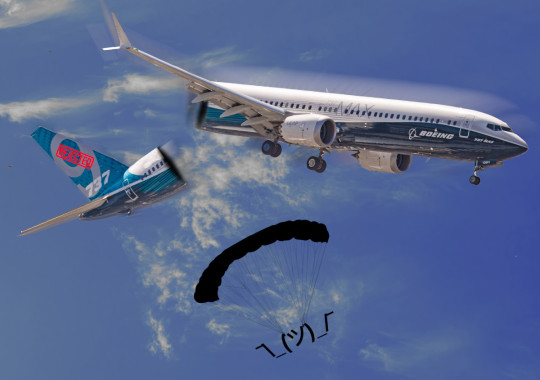
I'm touring my new, nationally bestselling novel The Bezzle! Catch me TOMORROW (May 2) in WINNIPEG, then Calgary (May 3), Vancouver (May 4), Tartu, Estonia, and beyond!

Boeing's 787 "Dreamliner" is manufactured far from the company's Seattle facility, in a non-union shop in Charleston, South Carolina. At that shop, there is a cage full of defective parts that have been pulled from production because they are not airworthy.
Hundreds of parts from that Material Review Segregation Area (MRSA) were secretly pulled from that cage and installed on aircraft that are currently plying the world's skies. Among them, sections 47/48 of a 787 – the last four rows of the plane, along with its galley and rear toilets. As Moe Tkacik writes in her excellent piece on Boeing's lethally corrupt culture of financialization and whistleblower intimidation, this is a big ass chunk of an airplane, and there's no way it could go missing from the MRSA cage without a lot of people knowing about it:
https://prospect.org/infrastructure/transportation/2024-04-30-whistleblower-laws-protect-lawbreakers/
More: MRSA parts are prominently emblazoned with red marks denoting them as defective and unsafe. For a plane to escape Boeing's production line and find its way to a civilian airport near you with these defective parts installed, many people will have to see and ignore this literal red flag.
The MRSA cage was a special concern of John "Swampy" Barnett, the Boeing whistleblower who is alleged to have killed himself in March. Tkacik's earlier profile of Swampy paints a picture of a fearless, stubborn engineer who refused to go along to get along, refused to allow himself to become inured to Boeing's growing culture of profits over safety:
https://prospect.org/infrastructure/transportation/2024-03-28-suicide-mission-boeing/
Boeing is America's last aviation company and its single largest exporter. After the company was allowed to merge with its rival McDonnell-Douglas in 1997, the combined company came under MDD's notoriously financially oriented management culture. MDD CEO Harry Stonecipher became Boeing's CEO in the early 2000s. Stonecipher was a protege of Jack Welch, the man who destroyed General Electric with cuts to quality and workforce and aggressive union-busting, a classic Mafia-style "bust-out" that devoured the company's seed corn and left it a barren wasteland:
https://qz.com/1776080/how-the-mcdonnell-douglas-boeing-merger-led-to-the-737-max-crisis
Post-merger, Boeing became increasingly infected with MDD's culture. The company chased cheap, less-skilled labor to other countries and to America's great onshore-offshore sacrifice zone, the "right-to-work" American south, where bosses can fire uppity workers who balked at criminal orders, without the hassle of a union grievance.
Stonecipher was succeeded by Jim "Prince Jim" McNerney, ex-3M CEO, another Jack Welch protege (Welch spawned a botnet of sociopath looters who seized control of the country's largest, most successful firms, and drove them into the ground). McNerney had a cute name for the company's senior engineers: "phenomenally talented assholes." He created a program to help his managers force these skilled workers – everyone a Boeing who knew how to build a plane – out of the company.
McNerney's big idea was to get rid of "phenomenally talented assholes" and outsource the Dreamliner's design to Boeing's suppliers, who were utterly dependent on the company and could easily be pushed around (McNerney didn't care that most of these companies lacked engineering departments). This resulted in a $80b cost overrun, and a last-minute scramble to save the 787 by shipping a "cleanup crew" from Seattle to South Carolina, in the hopes that those "phenomenally talented assholes" could save McNerney's ass.
Swampy was part of the cleanup crew. He was terrified by what he saw there. Boeing had convinced the FAA to let them company perform its own inspections, replacing independent government inspectors with Boeing employees. The company would mark its own homework, and it swore that it wouldn't cheat.
Boeing cheated. Swampy dutifully reported the legion of safety violations he witnessed and was banished to babysit the MRSA, an assignment his managers viewed as a punishment that would isolate Swampy from the criminality he refused to stop reporting. Instead, Swampy audited the MRSA, and discovered that at least 420 defective aviation components had gone missing from the cage, presumably to be installed in planes that were behind schedule. Swampy then audited the keys to the MRSA and learned that hundreds of keys were "floating around" the Charleston facility. Virtually anyone could liberate a defective part and install it into an airplane without any paper trail.
Swampy's bosses had a plan for dealing with this. They ordered Swampy to "pencil whip" the investigations of 420 missing defective components and close the cases without actually figuring out what happened to them. Swampy refused.
Instead, Swampy took his concerns to a departmental meeting where 12 managers were present and announced that "if we can’t find them, any that we can’t find, we need to report it to the FAA." The only response came from a supervisor, who said, "We’re not going to report anything to the FAA."
The thing is, Swampy wasn't just protecting the lives of the passengers in those defective aircraft – he was also protecting Boeing employees. Under Sec 38 of the US Criminal Code, it's a 15-year felony to make any "materially false writing, entry, certification, document, record, data plate, label, or electronic communication concerning any aircraft or space vehicle part."
(When Swampy told a meeting that he took this seriously because "the paperwork is just as important as the aircraft" the room erupted in laughter.)
Swampy sent his own inspectors to the factory floor, and they discovered "dozens of red-painted defective parts installed on planes."
Swampy blew the whistle. How did the 787 – and the rest of Boeing's defective flying turkeys – escape the hangar and find their way into commercial airlines' fleets? Tkacik blames a 2000 whistleblower law called AIR21 that:
creates such byzantine procedures, locates adjudication power in such an outgunned federal agency, and gives whistleblowers such a narrow chance of success that it effectively immunizes airplane manufacturers, of which there is one in the United States, from suffering any legal repercussions from the testimony of their own workers.
By his own estimation, Swampy was ordered to commit two felonies per week for six years. Tkacik explains that this kind of operation relies on a culture of ignorance – managers must not document their orders, and workers must not be made aware of the law. Whistleblowers like Swampy, who spoke the unspeakable, were sidelined (an assessment by one of Swampy's managers called him "one of the best" and finished that "leadership would give hugs and high fives all around at his departure").
Multiple whistleblowers were singled out for retaliation and forced departure. William Hobek, a quality manager who refused to "pencil whip" the missing, massive 47-48 assembly that had wandered away from the MRSA cage, was given a "weak" performance review and fired despite an HR manager admitting that it was bogus.
Another quality manager, Cynthia Kitchens, filed an ethics complaint against manager Elton Wright who responded to her persistent reporting of defects on the line by shoving her against a wall and shouting that Boeing was "a good ol’ boys’ club and you need to get on board." Kitchens was fired in 2016. She had cancer at the time.
John Woods, yet another quality engineer, was fired after he refused to sign off on a corner-cutting process to repair a fuselage – the FAA later backed up his judgment.
Then there's Sam Salehpour, the 787 quality engineer whose tearful Congressional testimony described more corner-cutting on fuselage repairs:
https://www.youtube.com/watch?v=PP0xhIe1LFE
Salehpour's boss followed the Boeing playbook to the letter: Salehpour was constantly harangued and bullied, and he was isolated from colleagues who might concur with his assessment. When Salehpour announced that he would give Congressional testimony, his car was sabotaged under mysterious circumstances.
It's a playbook. Salehpour's experience isn't unusual at Boeing. Two other engineers, working on the 787 Organization Designation Authorization, held up production by insisting that the company fix the planes' onboard navigation computers. Their boss gave them a terrible performance review, admitting that top management was furious at the delays and had ordered him to punish the engineers. The engineers' union grievance failed, with Boeing concluding that this conduct – which they admitted to – didn't rise to the level of retaliation.
As Tkacik points out, these engineers and managers that Boeing targeted for intimidation and retaliation are the very same staff who are supposed to be performing inspections of behalf of the FAA. In other words, Boeing has spent years attacking its own regulator, with total impunity.
But it's not just the FAA who've failed to take action – it's also the DOJ, who have consistently declined to bring prosecutions in most cases, and who settled the rare case they did bring with "deferred prosecution agreements." This pattern was true under Trump's DOJ and continued under Biden's tenure. Biden's prosecutors have been so lackluster that a federal judge "publicly rebuked the DOJ for failing to take seriously the reputational damage its conduct throughout the Boeing case was inflicting on the agency."
Meanwhile, there's the AIR21 rule, a "whistleblower" rule that actually protects Boeing from whistleblowers. Under AIR21, an aviation whistleblower who is retaliated against by their employer must first try to resolve their problem internally. If that fails, the whistleblower has only one course of action: file an OSHA complaint within 90 days (if HR takes more than 90 days to resolve your internal complaint, you can no have no further recourse). If you manage to raise a complaint with OSHA, it is heard by a secret tribunal that has no subpoena power and routinely takes five years to rule on cases, and rules against whistleblowers 97% of the time.
Boeing whistleblowers who missed the 90-day cutoff have filled the South Carolina courts with last-ditch attempts to hold the company to account. When they lose these cases – as is routine, given Boeing's enormous legal muscle and AIR21's legal handcuffs – they are often ordered to pay Boeing's legal costs.
Tkacik cites Swampy's lawyer, Rob Turkewitz, who says Swampy was the only one of Boeing's whistleblowers who was "savvy, meticulous, and fast-moving enough to bring an AIR 21 case capable of jumping through all the hoops" to file an AIR21 case, which then took seven years. Turkewitz calls Boeing South Carolina "a criminal enterprise."
That's a conclusion that's hard to argue with. Take Boeing's excuse for not producing the documentation of its slapdash reinstallation of the Alaska Air door plug that fell off its plane in flight: the company says it's not criminally liable for failing to provide the paperwork, because it never documented the repair. Not documenting the repair is also a crime.
You might have heard that there's some accountability coming to the Boeing boardroom, with the ouster of CEO David Calhoun. Calhoun's likely successor is Patrick Shanahan, whom Tkacik describes as "the architect of the ethos that governed the 787 program" and whom her source called "a classic schoolyard bully."
If Shanahan's name rings a bell, it might be because he was almost Trump's Secretary of Defense, but that was derailed by the news that he had "emphatically defended" his 17 year old son after the boy nearly beat his mother to death with a baseball bat. Shanahan is presently CEO of Spirit Aerospace, who made the door-plug that fell out of the Alaska Airlines 737 Max.
Boeing is a company where senior managers only fail up and where whistleblowers are terrorized in and out of the workplace. One of Tkacik's sources noticed his car shimmying. The source, an ex-787 worker who'd been fired after raising safety complaints, had tried to bring an AIR21 complaint, but withdrew it out of fear of being bankrupted if he was ordered to pay Boeing's legal costs. When the whistleblower pulled over, he discovered that two of the lug-nuts had been removed from one of his wheels.
The whistleblower texted Tkcacik to say (not for the first time): "If anything happens, I'm not suicidal."
Boeing is a primary aerospace contractor to the US government. It's clear that its management – and investors – consider it too big to jail. It's also clear that they know it's too big to fail – after all, the company did a $43b stock buyback, then got billions in a publicly funded buyback.
Boeing is, effectively, a government agency that is run for the benefit of its investors. It performs its own safety inspections. It investigates its own criminal violations of safety rules. It loots its own coffers and then refills them at public expense.
Meanwhile, the company has filled our skies with at least 420 airplanes with defective, red-painted parts that were locked up in the MRSA cage, then snuck out and fitted to an airplane that you or someone you love could fly on the next time you take your family on vacation or fly somewhere for work.

If you'd like an essay-formatted version of this post to read or share, here's a link to it on pluralistic.net, my surveillance-free, ad-free, tracker-free blog:
https://pluralistic.net/2024/05/01/boeing-boeing/#mrsa

Image:
Tom Axford 1 (modified)
https://commons.wikimedia.org/wiki/File:Blue_sky_with_wisps_of_cloud_on_a_clear_summer_morning.jpg
CC BY-SA 4.0
https://creativecommons.org/licenses/by-sa/4.0/deed.en
--
Clemens Vasters (modified)
https://commons.wikimedia.org/wiki/File:N7379E_-_Boeing_737_MAX_9.jpg
CC BY 2.0
https://creativecommons.org/licenses/by/2.0/deed.en
#pluralistic#mrsa#Material Review Segregation Area#787#dreamliner#swampy#faa#marking your own homework#monopolies#AS9100#Cynthia Kitchens#Sam Salehpour#737 max#ntsb#David Calhoun#boeing#whistleblowers#aviation#safety#John Barnett#maureen tkacik#Patrick Shanahan
667 notes
·
View notes
Text
Navigating Aerospace Excellence: AS 9100 Consulting Solutions
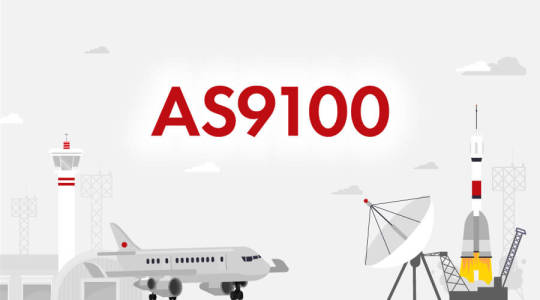
In the aerospace industry, adherence to stringent quality standards is paramount to success. AS 9100 Consultant services play a pivotal role in ensuring compliance and excellence in aerospace manufacturing and service provision. At 4C Consulting, a trusted ISO Certification Consulting company with a proven track record of implementing ISO Standards, we understand the complexities of AS 9100 requirements and offer expert consultancy to help aerospace organizations achieve and maintain certification.
Our AS 9100 Consultant services are tailored to the unique needs of each client, whether they are looking to implement AS 9100 for the first time or seeking assistance with maintaining certification. Our experienced consultants guide organizations through every step of the process, from gap analysis and documentation development to training and internal audits.
By partnering with 4C Consulting for AS 9100 consultancy, aerospace companies can benefit from our extensive industry knowledge, practical insights, and commitment to excellence. Our goal is to empower organizations to enhance their quality management systems, mitigate risks, and drive continuous improvement in line with AS 9100 requirements.
Whether you're a small aerospace supplier or a large OEM, our AS 9100 Consultant services can help you navigate the complexities of the standard and achieve your quality objectives. Contact us today to learn more about how we can support your AS 9100 certification journey.
0 notes
Text
Defining the AS9100 vs the ISO 9001
Are you confused about the differences of the AS9100 vs the ISO 9001? Read about the differences that distinguish each quality management standard. Read now!
0 notes
Text
The aircraft sector has its quality management system (QMS) standard, AS 9100, which is globally recognized. It includes extra criteria unique to the aerospace industry in addition to the ISO 9001 requirements. The standard addresses several quality management topics, including regulatory compliance, continuous improvement, risk management, and customer satisfaction.
#AS9100#AS9100 documents#AS9100 documentation#AS9100 documents templates#ready to use AS9100 documents#AS9100 documents kit
0 notes
Text
How to implement product safety requirements according to AS9100 Rev D?
AS9100 Rev D introduced additional standards for recognizing and controlling product safety in your aerospace Quality Management System (QMS), however, these rules can be perplexing for many firms who have not previously detected product safety issues. As the importance of product safety has grown in the aerospace sector, the AS9100 Rev D standard has incorporated new requirements for this vital topic. While Clause 8.1.3 is brief, understanding how to apply those requirements to your item cannot be stressed. Let's have a look at the complete sentence and how it should be interpreted and used.
#as9100#as9100certification#as9100standard#as9100documents#as9100auditortrainingcourse#as9100productsafetyrequirements
0 notes
Text
The primary purpose of the online AS9100 Lead Auditor Training Course is to give advanced training and online certification for those who wish to become lead auditors for the QMS standard for Aviation, Space, and Defence. In addition to learning about ISO 9001:2015 and AS 9100D Quality Management Principles, participants will also become familiar with the requirements of AS 9100D Standards.
#as9100#as9100certification#onlineas9100leadauditortraining#elearningas9100leadauditortrainingcourse
0 notes
Text
What You Need to Know About AS9100 Requirements

AS9100 is a quality management system specific to the aerospace industry. It's designed to help companies meet the strict conditions for safety, quality, and trust ability necessary for producing aerospace products and services.
Achieving AS9100 certification is critical for aerospace businesses that want to succeed in today's business world. This article will explore the AS9100 requirements and standard and their significance for the aerospace industry.
0 notes
Photo
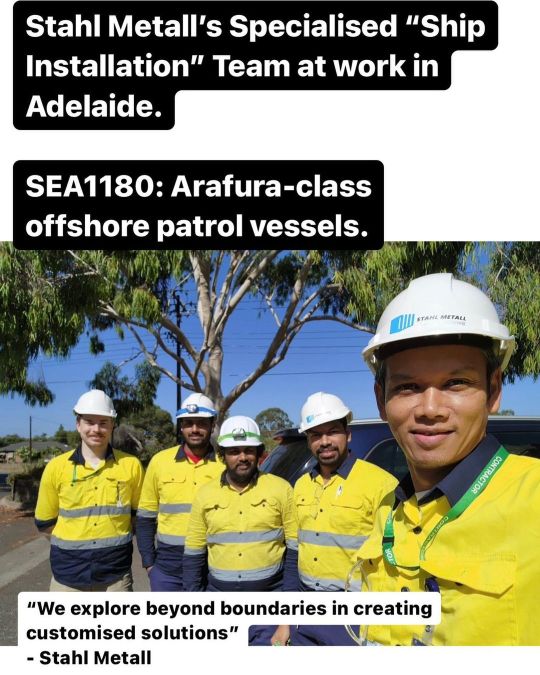
Stahl Metall’s Specialised “Ship Installation” Team at work in Adelaide. SEA 1180: Arafura-class offshore patrol vessels. Stahl Metall specialises in Elecrical Control Systems, Communication, Power Distribution and “Robust” Cable Harness and Electronic Box Assemblies and Installation. Full 'Plug and Play' Systems. “We explore beyond boundaries in creating customised solutions” - Stahl Metall #Stahl_Metall #AS9100 #AIC https://www.instagram.com/p/CqYCf_3PnJr/?igshid=NGJjMDIxMWI=
0 notes
Link
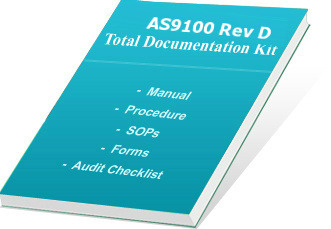
1 note
·
View note
Photo

With AS9100 certification, consumers may save costs by improving working relationships with their suppliers. They also qualify for inclusion in the OASIS, or Online Aerospace Supplier Information System.
0 notes
Link
ISO 9001 Consulting Experts Los Angeles California - ISO 9001 Certification Consulting
ISO 17025 Standard Accreditation and Consulting Los Angeles, ISO 17025 Standard Certification Consulting Los Angeles, ISO 45001 Training courses Online Los Angeles, ISO 13485 Quality Management System for Medical Devices Certification Consulting Los Angeles, ISO 45001 Training courses Online California, R2 Audit Training courses, R2 Training courses, R2v3 Masterclass training, ISO 13485 Standard Consulting Los Angeles, e-Stewards Certification and Consulting, ISO 9001 Certification Consulting, R2 Certification Consulting, AS9100C Training courses, ISO 9001 Consulting, ISO 9001 implementation consulting, ISO 9001 implementation training, ISO 14001 online training, AS9100 certification consulting and training, ISO 9001 Certification and Auditor Training, ISO 45001 Consultant in California, ISO 9001 online training, ISO 9001 documentation, how to get iso 9001, iso 45001 transition
#ISO 9001 documentation#ISO 9001 online training#ISO 9001 Certification and Auditor Training#AS9100 certification consulting and training#AS9100C Training courses#ISO 9001 Consulting#ISO 9001 implementation consulting#ISO 9001 Certification Consulting
4 notes
·
View notes
Text
Mastering Aerospace Manufacturing with AS9100 Standards
In the world of aerospace manufacturing, where innovation meets precision, there’s no room for compromise. Enter AS9100, the ultimate navigator guiding industry players towards unparalleled excellence. Buckle up as we embark on a journey to discover how harnessing AS9100 standards can transform aerospace manufacturing facilities into powerhouses of quality and reliability.
Unveiling AS9100: Your Passport to Perfection
AS9100 is more than just a standard — it’s a roadmap that leads to consistent quality, safety, and efficiency. With meticulous attention to detail and unwavering dedication to perfection, aerospace manufacturers equipped with AS9100 soar above the competition, delivering flawless components that defy expectations.
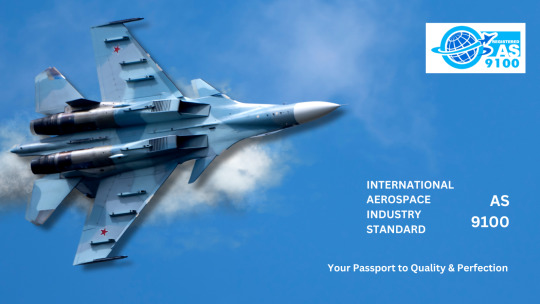
Beyond the Horizon: Gaining a Competitive Edge
AS9100 streamlines processes, eliminates wasteful practices, and ignites a spark of innovation that accelerates productivity to new heights. From concept to delivery, every step is finely tuned for maximum efficiency and impact. With the coveted AS9100 seal of approval, companies not only demonstrate their commitment to excellence but also gain a competitive edge that propels them to the forefront of the industry.
0 notes
Text

Quality Management with AS9100 Certification Consultants
If you are looking to ace your quality management system and remain in the aviation industry, then you must contact the AS9100 certification consultants at Compliancehelp Consulting LLC. Improve your system’s efficiency level in as little as 30 days. To obtain more information, answers to your questions or to schedule an appointment with our consultants visit us online at https://www.quality-assurance.com/ now!
0 notes
Text
AS9100 defines the criteria for quality management systems that assist aerospace businesses in designing, creating, and delivering safe and dependable products that meet customer, legal, and regulatory expectations.
AS9100, developed by the International Aerospace Quality Group (IAQG) and the Society of Automotive Engineers International (SAE), is recognised globally and by industry titans such as the Federal Aviation Administration, the US Department of Defence, and NASA. The standard has undergone multiple updates since it was initially issued in 1997. AS9100 Rev D, or simply AS9100D, was introduced in 2016.
Requirements of AS9100 from Clause 4 to Clause 10
AS9100, which is largely based on ISO 9001, is simplest to comprehend if you first understand the original quality standard. The International Aerospace Quality Group has taken the 9001 standard and added aerospace-specific standards. As we deconstruct the precise criteria of the aerospace standard, we'll examine how you'll beef up the 9001 standards to satisfy this high demand for excellence.
#AS9100#AS9100 documents#AS9100 documentation toolkit#AS9100 manual#AS9100 certification#AS9100 audit checklist#AS9100 clauses
0 notes
Link
The AS9100 standard is a set of guidelines for implementing a Quality Management System for use by aviation, space, and defense organizations (often referred to as the aerospace industry). The AS9100 standard is formed by the International Aerospace Quality Group, which are representatives of aerospace companies worldwide. Though, AS9100 is not maintained by the International Organization for Standardization. Instead, it builds on the requirements for a Quality Management System as defined in the ISO 9001 Quality Management System requirements.
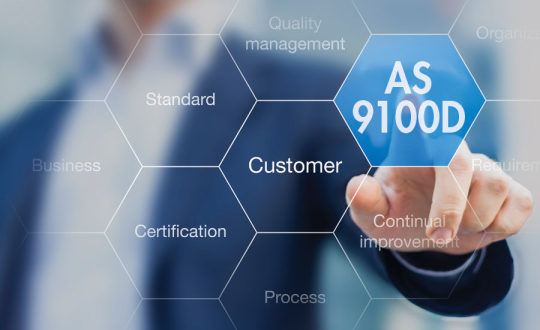
1 note
·
View note
Photo
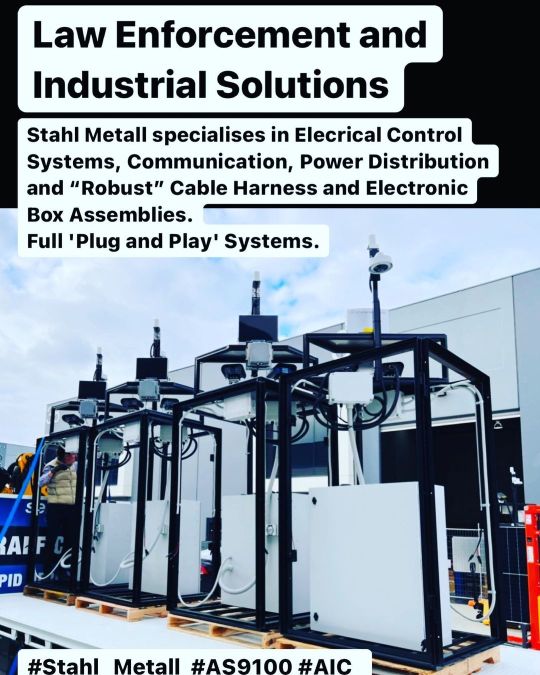
Law Enforcement and Industrial Solutions Stahl Metall specialises in Elecrical Control Systems, Communication, Power Distribution and “Robust” Cable Harness and Electronic Box Assemblies. Full 'Plug and Play' Systems. #stahl_metall #as9100 #aic #australianmade https://www.instagram.com/p/Cg5tg6kPTUV/?igshid=NGJjMDIxMWI=
0 notes